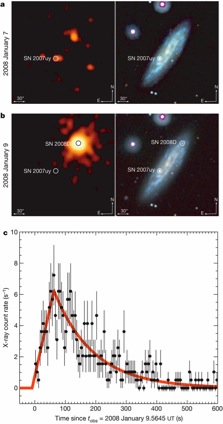Relativistic and Newtonian shock breakouts
The light from the breakout of a shock through the stellar surface is the first electromagnetic signal from any stellar explosion. This light carries a wealth of information on the progenitor and on the explosion itself. For example, it can potentially probe the progenitor radius, ejecta mass and energy, explosion sphericity and the progenitor mass loss just prior to the explosion. In addition, it is the only probe of the structure, and possibly composition, of the outermost layers of the progenitor at the time of the explosion. Prior to the breakout, the shock that is crossing the star is dominated by radiation. This radiation is diffusing out of the expanding hot gas sphere following the breakout. The physical processes that dominate the observed emission are therefore that of radiation dominated shocks and that of radiation transfer in expanding medium. One of the main challenges in calculating a Newtonian breakout and the emission that follows it, is deviation from thermal equilibrium, which in some cases can significantly affect the observed spectrum. In Relativistic breakouts, pair production plays a major role, significantly increasing the complexity of the system. We are addressing these issues in the papers that we recently published and in ongoing work that is done in the group.






From our paper about the shock breakout of SN2008D (Soderberg et al. 2008)